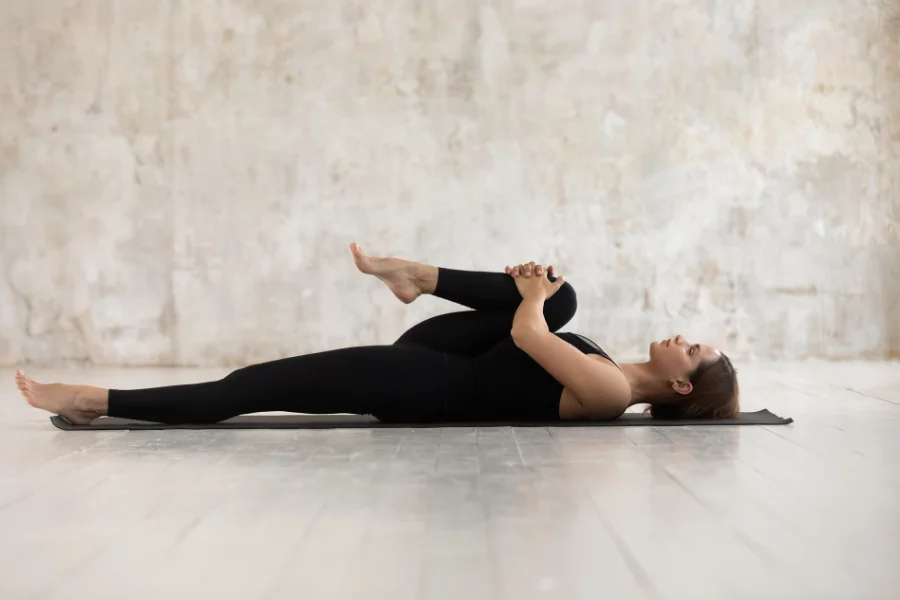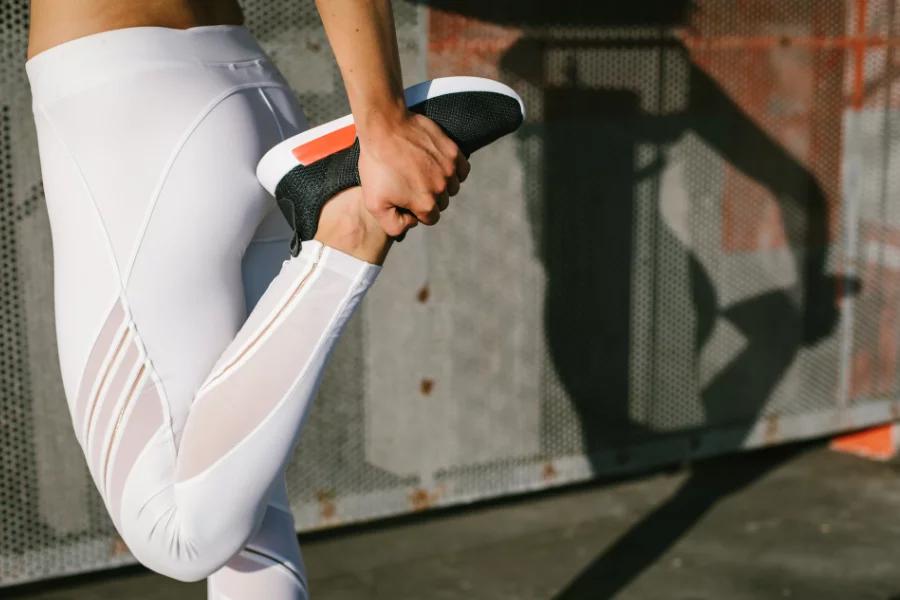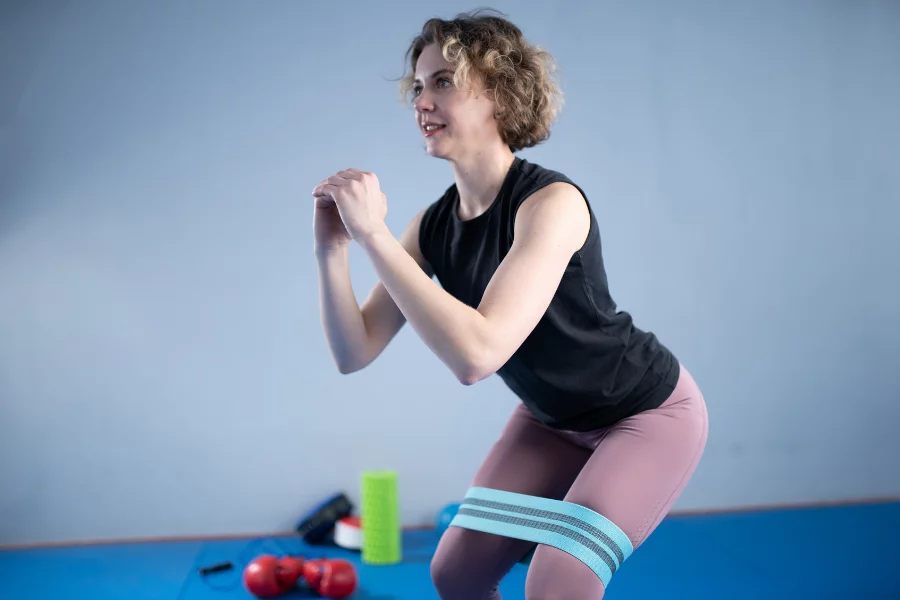Rotated Pelvis Symptoms, Causes and Fixes

A rotated or tilted pelvis is often a symptom of muscular imbalance, contributing to chronic back pain via an excessively curved spine and increased stress on the back. Individuals with a pelvic tilt also often experience lordosis in the lower back (duck posture), or kyphosis (rounded shoulders and hunched neck) from excessive sitting.
While a tilted pelvis might not initially cause pain, its structural effect on the rest of the spine eventually contributes to aggravated symptoms in general, a sign of poor physical health due to weak and imbalanced muscles. It’s estimated that as many as 85 percent of men and 75 percent of women show signs of a rotated or anterior pelvic tilt.
There are a few ways to correct a tilted pelvis, including physical therapy and exercises that can help strengthen the muscles around the hips and spine. Surgery is also an option in severe cases, but it’s typically a last resort.
What Is a Twisted or Rotated Pelvis?
A rotated or tilted pelvis is a condition that results when the pelvic bones are out of alignment. It’s often caused by muscular imbalance, which can lead to chronic back pain and other health problems.
How Does a Rotated Pelvis Cause Back Pain?
When the pelvic bones are out of alignment, it causes the spine to curve abnormally. This puts stress on the back muscles and ligaments, leading to pain and other symptoms.
What Are the Symptoms of a Rotated Pelvis?
If you have a rotated pelvis, you may experience chronic back pain, lordosis (duck posture), or kyphosis (rounded shoulders and hunched neck). You may also find it difficult to do certain activities or exercises.
The symptoms of a rotated pelvis vary depending on the severity of the condition. In mild cases, there may be no symptoms other than back pain. In more severe cases, the following symptoms may be present:
- Chronic back pain
- Kyphosis (rounded shoulders and hunched neck)
- Lordosis (swayback posture)
- Pain in the hips, buttocks, or legs
- Weakness in the legs or feet
If you’re experiencing any of these symptoms, it’s important to see a doctor so that you can get treatment.
How Is a Rotated Pelvis Diagnosed?
Your doctor will likely ask about your symptoms and medical history. They may also do a physical examination to look for signs of a rotated pelvis. In some cases, imaging tests may be ordered to confirm the diagnosis.
How does a Rotated Pelvis Happen?
The pelvis is a complex bone structure that supports and balances the trunk and serves as the base of the spine. It attaches directly to the femurs (thigh bones) as well and is also known as the hip bone. Ideally, the pelvis should be in a neutral position which allows the spine to stack naturally and avoid excessive shearing and compression forces, which could contribute to spine issues ranging from compressed nerves to slipped discs.
Imbalances related to Excessive sitting
But certain imbalances often related to excessive sitting and lack of exercise cause specific muscles attached to the hip bone to become tight, while others are weakened. Hip flexors, which describe a set of muscles attaching between the hip bone and the thigh bone and work to bring the knee to the chest, become tight and shortened due to long periods of sitting, while the glutes and hamstrings primarily act as hip extensors (straightening the leg, i.e. standing up or thrusting the hips forward), get weaker.
The result is a pelvis that tilts forward as tight hip flexors pull it closer to the femur, while the weak glutes fail to counteract this shift.
Excessive Sitting, Poor Posture, and Back Health
Both the anterior and posterior pelvic tilt are common signs of inactivity and poor posture, most attributed to a long sedentary lifestyle. Genetics may play a part, as our posture and natural inclination towards one stance or another is at least partially a matter of bone structure.
By addressing the muscular weaknesses that contribute to the pelvic tilt (i.e. weak hip flexors, weak glutes, weak hamstrings, weak quadriceps, weak abdominal muscles), a proper exercise plan set up and guided by a specialist can often correct the issue and lead to overall lower risk of back pain as a result of a stronger and more resilient trunk and lower body.
Stretching and Strengthening Exercises for a Rotated Pelvis
The exercises used to address a rotated pelvis primarily address the hip flexors and hip extensors. The abdominals and spinal erectors are also important muscles, as they ensure a stiff and neutral trunk, and act to support and straighten the spine.
You should always consult with a specialist before starting an exercise program.
Hip Flexor Stretch:
Lie on your back on the floor and pull one knee towards your chest. Use your hand to hold the thigh as you gently push down on the knee with your other hand, until you feel a stretch in the front of your hip. Hold for 30 seconds and repeat 3 times.
Quadriceps Stretch:
Stand up tall and take a large step forward with your right leg, bending your right knee so that your thigh is parallel to the ground. Grasp your right ankle with your left hand and gently pull until you feel a stretch in the front of your thigh. Hold for 30 seconds and repeat 3 times. Then do the same with your left leg.
Hip Rotator Stretch:
Lie on your back on the floor and cross one ankle over your knee. Use your hand to grab the thigh of the crossed leg and pull it towards your chest until you feel a stretch in the buttock. Hold for 30 seconds and repeat 3 times. Then do the same with the other leg.
Pelvic Tilts:
Lie on your back on the floor with your knees bent and feet flat on the ground. Tilt your pelvis so that your lower back presses into the ground, then arch your back so that there is a space between the lower back and the ground. Repeat 10 times.
Proper Plank
Performed on the hands or elbows, the focus here should be on keeping the abdominal muscles braced. Take slow deep belly breaths, rather than quick shallow chest breaths. Flex the glutes to avoid pelvic tilt.
Lunge
Again, flex the glutes at the top to prevent a pelvic tilt. Lightly stretch the hip flexors with each repetition. Unilateral (one-sided) exercises like the lunge also train the hip abductors and adductors and help work on lateral imbalances.
Hip Adduction and Abduction
Best performed with a resistance band of your choosing, these exercises train the muscles that rotate the leg inward and outward. Weak abductors may contribute to a pelvic tilt. Incorporating hip abduction during regular glute bridges (via a resistance band above the knee) can greatly help in treating anterior pelvic tilt.
Correction and Prevention Tips
While prevention is often more important than the cure, strengthening exercises can go a long way to correcting the problem, including (but limiting to):
- Make sure you are wearing good shoes. Shoes that have a strong heel and good arch support can help keep your pelvis in alignment.
- Practice good posture. When you sit or stand, make sure your spine is straight and your shoulders are back.
- Stretch regularly. Stretching can help loosen tight muscles that may be contributing to the rotation of your pelvis.
- Take breaks from sitting: walk in long strides and lightly stretch your hips, with hip circles or donkey kicks. Warmup before going from seated to strenuous stretches.
- Exercise regularly: even if the exercises seem easy, or if you only have time for a light session, try to get moving and break a sweat at least three times a week. Long walking sessions, a light jog, or a series of calisthenics can help.
By taking breaks from sitting and regularly exercising the hips, trunk, and legs, the pelvis can typically be pulled into a neutral position. It’s still a good idea to keep posture in mind and continue to exercise even after the problem has been resolved.






I thought I had a pinched nerve last month I work out when I can say 2x a week I would jogg ,because I have my mom who suffering from dementia and jogging was how I cope.. I sux at stretching but I did 1x mile within 20 min
Well after that 1x day that I woke up thinking I had a pinche nerve on my right lower hip area .. a few days later I went to a chiropractor well he said I had a misaligned pelvis, so he popped my back and gave me 2- weeks or 2 days it was up to me so here I am about 1 month in it bed ridden ,because I can’t put my right foot fully on the ground with my weight on it. It hurts so I tried walking and doing for my mom but it made it worse and I go backwards with it. I pray in 2 weeks I am fully healed to at least try and walk I bought so much stuff on Amazon and been soaking my hip/foot in hot water with epison salt I been eating soups like chicken my wife made salads with fish I eat cereal with berries I drink water and drink this green superfoods for greens I pray and have made some ***life changes ** buying brooks /new balance shoes and read about stories of other people. I am so scared I am 41 always been healthy as a cat and this happens my house hold is not the same I know I do a lot more than anyone else and here I am bed ridden with my cat staring at me 24/7 he and my wife are so there for me. I also had for 1 week sciatica pains but I think that lasted 1 week it was painful I wanted to put a bullet in my skull that week. Geez. Life brings us so much pain and headaches I am learning a lot now and to not be so bad at doing and doing.. am I on the right path to recovery and does this story seem to make sense I hope so . I also want to know is massaging my feet o.k the bad one
Dear lord I am such a chicken I am not 21 anymore. I also bought this black mat that helps circulation in the feet. I am all scattered brain I m also in my women’s monthly pms. Yet another week . Any suggestions would be wonderful. #progress
My care provider Dr Miller introduced me to VineHealth and their amazing ALS Herbal treatment. The treatment is a miracle. Reach VHC at vinehealthcenter. com. Its just amazing!!!